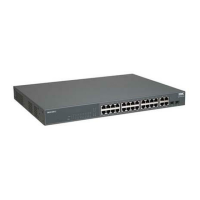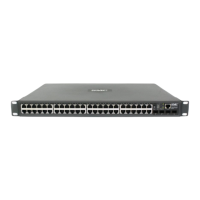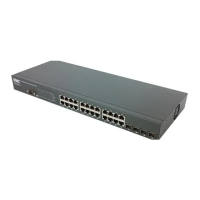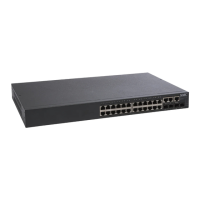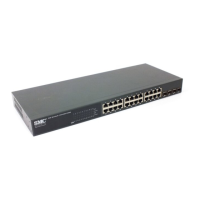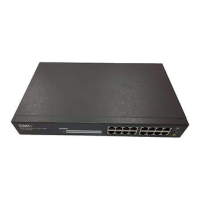C
ONFIGURING
THE
S
WITCH
3-36
Command Attributes
• System Log Status – Enables/disables the logging of debug or error
messages to the logging process. (Default: Enabled)
• Flash Level – Limits log messages saved to the switch’s permanent
flash memory for all levels up to the specified level. For example, if
level 3 is specified, all messages from level 0 to level 3 will be logged to
flash. (Range: 0-7, Default: 3)
• RAM Level – Limits log messages saved to the switch’s temporary
RAM memory for all levels up to the specified level. For example, if
level 7 is specified, all messages from level 0 to level 7 will be logged to
RAM. (Range: 0-7, Default: 7)
Note: The Flash Level must be equal to or less than the RAM Level.
Table 3-3. Logging Levels
Level Severity Name Description
7 Debug Debugging messages
6 Informational Informational messages only
5 Notice Normal but significant condition, such as cold
start
4 Warning Warning conditions (e.g., return false,
unexpected return)
3 Error Error conditions (e.g., invalid input, default used)
2 Critical Critical conditions (e.g., memory allocation, or
free memory error - resource exhausted)
1 Alert Immediate action needed
0 Emergency System unusable
* There are only Level 2, 5 and 6 error messages for the current firmware release.
